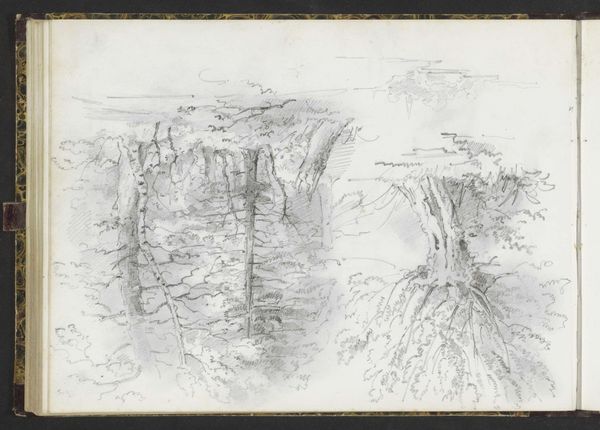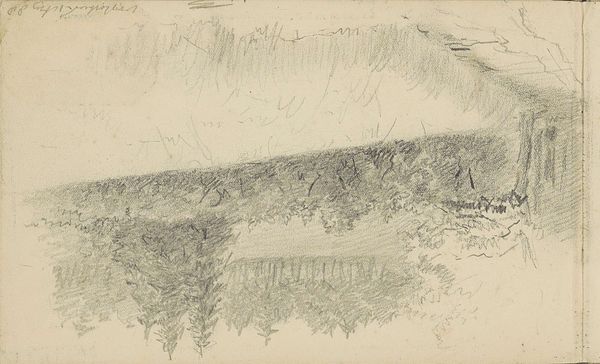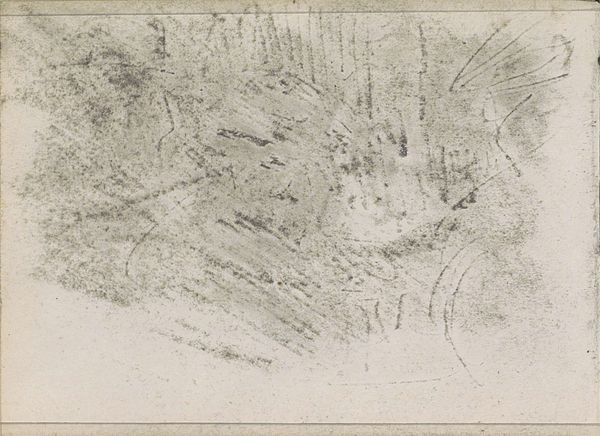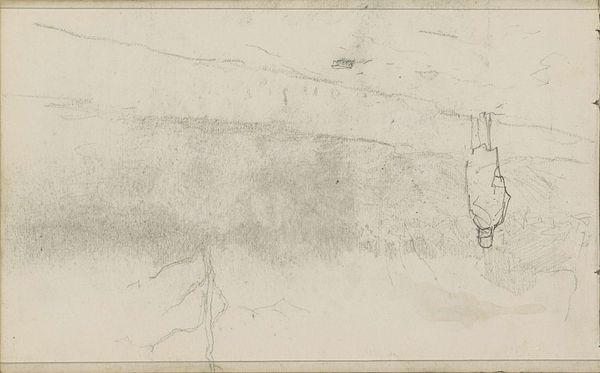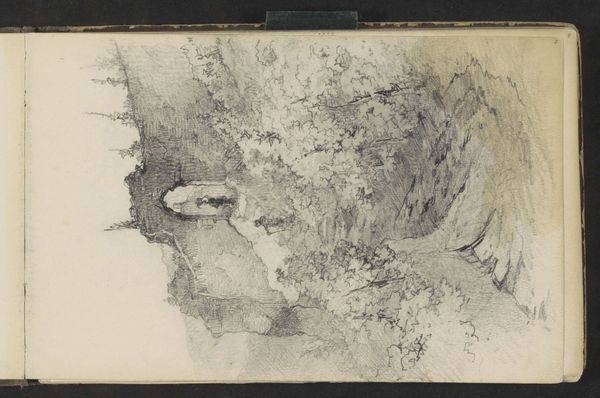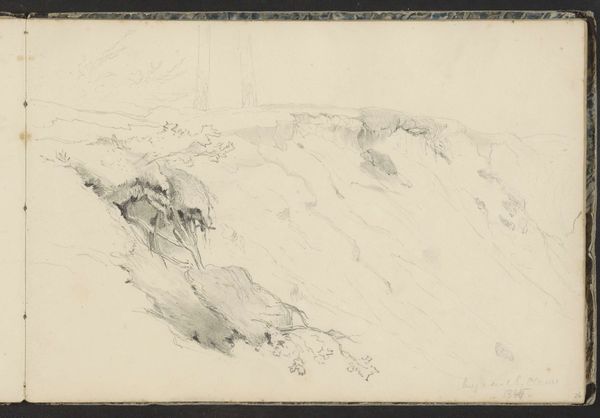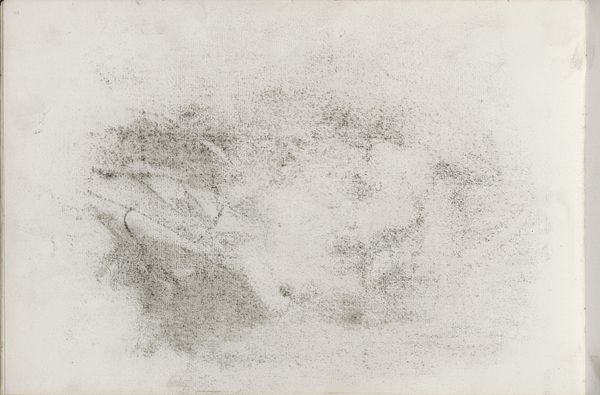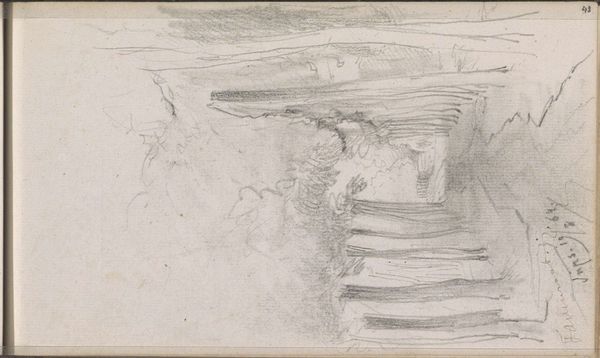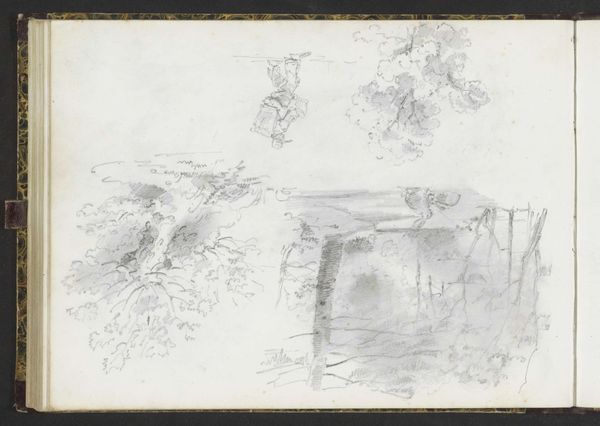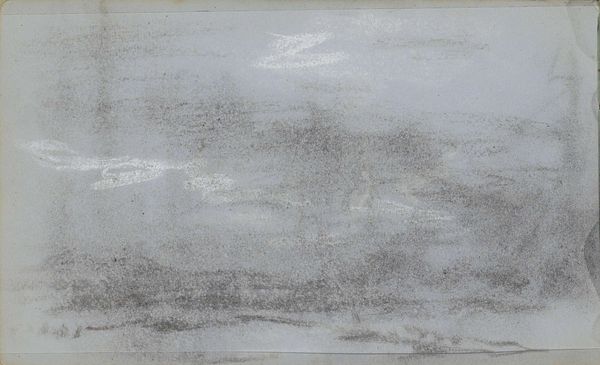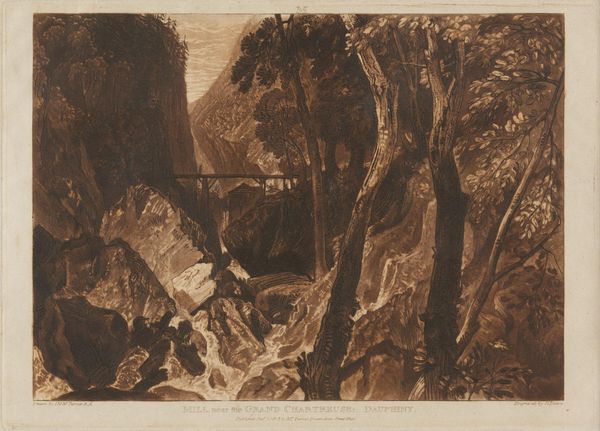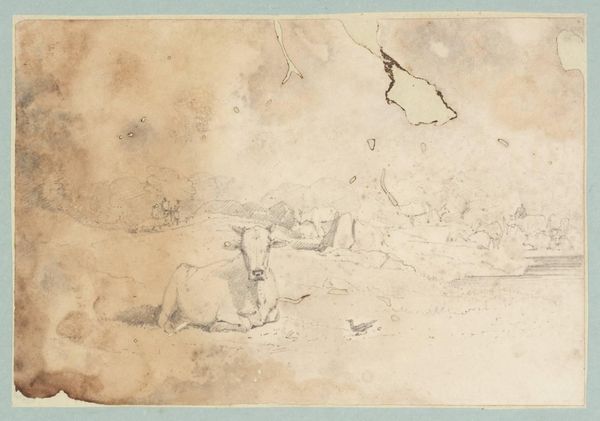
drawing, charcoal
#
drawing
#
sculpture
#
landscape
#
charcoal drawing
#
oil painting
#
romanticism
#
park
#
charcoal
#
charcoal
#
watercolor
Copyright: Rijks Museum: Open Domain
Curator: Charles Rochussen created this intriguing landscape, "Two Women Walking in a Park," sometime between 1840 and 1860. It's currently held here at the Rijksmuseum. He employed charcoal in this evocative drawing. Editor: My first impression? It's surprisingly soft, considering the use of charcoal. Almost dreamlike. The figures are diminutive, practically swallowed by the park itself. Curator: That sense of immersion is deliberate. Rochussen lived during a period of significant urbanization. Paintings like this served as nostalgic reminders of nature's beauty. The park, here, is an idealized vision of tranquil escape. Editor: The trees are so lush, almost overwhelmingly so. Yet there is an artifice to their arrangement, like a stage set, and classical sculptures in the background seem to mirror those two diminutive women. It does trigger that familiar desire for simpler, calmer times, I suppose. Curator: Exactly. Think of the social changes occurring then—the rise of industrialism, shifting class structures. Public parks became increasingly important spaces, mediating social interactions and shaping civic identities, influencing artistic trends such as Romanticism, evidenced in this work's composition. Editor: Those figures seem purposefully placed—two nymphs set loose in Arcadia! The park, as depicted, becomes an emotional vessel rather than just a geographical location, a sort of "Paradise Lost and Regained" scenario. Are we romanticizing the restorative capacity of nature? Curator: In a way, yes. The symbolism extends beyond just the visual appeal. Think of parks during this time – access often varied across class lines, a subtle undercurrent to the imagery. It points to broader debates regarding who benefits from 'nature' and how society structures such access. Editor: That's quite the socio-political lens, isn’t it? Looking closely now, I realize the muted palette helps emphasize the painting's pensive qualities. It really does feel less about depicting a real location and more about evoking a feeling – a certain kind of wistful longing. Curator: Art of this era walked that line, navigating the shifting societal landscape and reflecting it back in selective ways, creating an interesting dialectic. Editor: Indeed. Well, looking at the symbology and history behind this image offers a different appreciation. There is something timeless and pertinent for today’s generation that’s grappling with their relationship with the environment and public space.
Comments
No comments
Be the first to comment and join the conversation on the ultimate creative platform.
